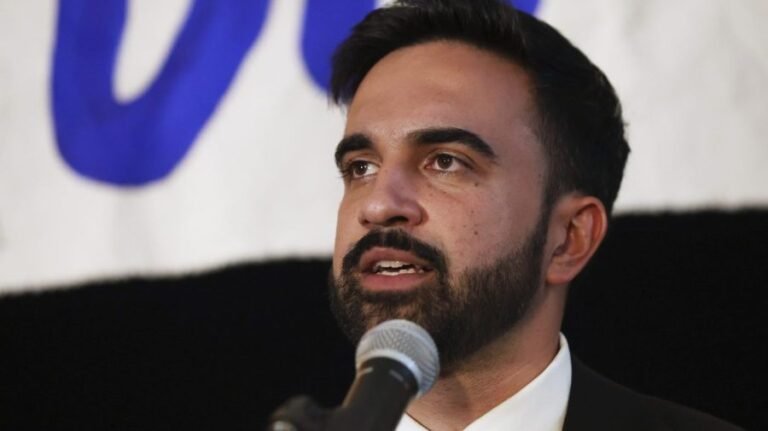
President Trump’s domestic agenda bill spans military and immigration measures, major cuts to national healthcare, and numerous industrial incentives — but the heart of the bill is still tax cuts.
The Congressional Budget Office and the Joint Committee on Taxation scored the Senate version of the bill as cutting deficits by $500 billion over ten years without the cost of the main tax cuts in the bill, which are extensions of cuts initially passed in 2017.
With those cuts included in the accounting, the cost is $3.3 trillion, or about 9.1 percent of the total U.S. debt stock at $36 trillion. This number does not include additional interest costs necessary to pay for the debt.
Revenues from tariffs are expected to offset a significant portion of the cost at about $2.5 trillion, not counting macroeconomic and debt-service costs, but are still less than the overall cost of the bill.
Here’s a breakdown of the big tax provisions that are the bill’s centerpiece.
Individual provisions
The 2017 tax law’s lower marginal tax rates, higher standard deduction, and cancellation of personal exemptions are all maintained and made permanent.
The standard deduction is boosted by $750 for single filers and by $1,500 for couples. Inflation adjustments apply to the bottom two tax brackets only.
The child tax credit is boosted to $2,200 from $2,000, adjusted for inflation and restricted to taxpayers with a Social Security number.
The alternative minimum tax exemption is made permanent, but the phaseout happens twice as fast.
The inheritance and gift tax exemptions are increased to $15 million for individuals and $30 million for couples and are pinned to inflation.
The state and local tax (SALT) deduction cap — one of the most controversial provisions that endured a lengthy battle in the House — is increased to $40,000 and upped annually through 2029 for people making less than $500,000 a year. Starting in 2030, the cap goes back down to $10,000.
“There’s a good chance a future Congress could move to further extend the higher deduction,” Beacon Policy advisers wrote in an analysis.
The bill does away with the IRS direct online tax filing program passed in 2022.
Trump’s additional individual cuts
Trump promised a number of additional individual cuts geared toward working-class people while on the campaign trail, and most of them made it into the final bill.
Tipped wages can be deducted up to $25,000 and overtime wages up to $12,500, with phaseouts starting at an annual income threshold of $150,000 for single filers.
Seniors get an additional deduction of up to $6,000 on top of the standard deduction.
Auto loan interest payments can be deducted up to $10,000, phasing out above a level of $100,000, as long as the car is made in the U.S.
Those deductions run through 2028 and could represent another tax cliff that will factor into future elections, lawmakers have told The Hill.
The bill also includes “Trump accounts” – savings accounts for kids born between 2024 and 2028 into which the government will deposit $1,000.
Domestic business tax cuts
Perhaps the most significant single provision of the 2017 Trump tax cuts was the reduction of the corporate tax rate to 21 percent from 35 percent. The current bill preserves that reduction.
Combined with other measures in the tax code, some of the biggest companies in the Fortune 500 and S&P 500 saw the share of profits they paid in tax drop from 22 percent to 12.8 percent as a result of the legislation, according to an analysis by the Institute on Taxation and Economic Policy.
The bill also preserves the 20-percent deduction for pass-through business income. Most businesses in the U.S. are pass-throughs — a designation that includes LLCs, partnerships, sole proprietorships and S-corporations.
An up-front depreciation deduction, a new accounting standard for interest deductibility, and expensing for research and development costs are also included. This trio of cuts has been avidly sought by business lobbies since they expired a few years ago.
The up-front depreciation deduction is retroactive to the beginning of Trump’s current term.
There’s also a factory construction credit, a semiconductor manufacturing credit, an opportunity zone credit, and a carbon sequestration credit, among others.
International business tax changes
Though details are scarce, the U.S. appears to have struck a deal with the Group of Seven (G7) large economies that would allow it to pull out of the global minimum tax deal that’s being negotiated at another international forum, the Organization for Economic Cooperation and Development (OECD).
Both the U.S. and the OECD are sounding touting a “side by side” arrangement that would preserve the international Pillar 2 structure at the OECD, which is loathed by Republicans, while allowing the U.S. to have its own international tax structure comprising tax structures known as GILTI, FDII and BEAT along with the corporate alternative minimum tax.
The deal allowed a retaliatory international tax known as Section 899 to be left out of the final text of the bill, much to the relief of international investors in the U.S.
Some tax experts have emphasized the separate-but-equal structures of the OECD and U.S. frameworks, but others have said it amounts to the U.S. simply going its own way and effectively pulling out of the deal.
“The architecture is not really the same,” David Rosenbloom, director of the international tax program at the New York University School of Law, told The Hill.
The main difference is that multinational subsidiaries get to blend their incomes together for taxation purposes in the U.S. system, thereby paying less tax, while the OECD framework counts subsidiaries individually, Rosenbloom said.
The minimum rates of taxation are also different, as are the handling of tangible business assets, which can allow income to be exempt from the minimum.
Rosenbloom said it was “strange” that the U.S. has effectively pulled out of the deal while intending to remain at the table in the OECD process.
“If we’re out, we’re out,” he said. “I don’t see why other countries should need our views on their tax issues.”
Other tax changes
Other tax changes in the bill include an expansion of the low-income housing tax credit, the elimination of moving expenses, an extension of the mortgage interest deduction limit, and increases to care programs for dependents.
There’s also a private school tax credit that some groups are calling controversial. This credit reimburses donors for the first $1,700 they give to groups that provide private school tuition vouchers.
The Institute on Taxation and Economic Policy called the credit “unprecedented” and warned about hidden costs stemming from the measure.
“The lack of an aggregate cap on the tax credit creates the possibility that this policy could carry an immense price tag,” the group said in an analysis.






